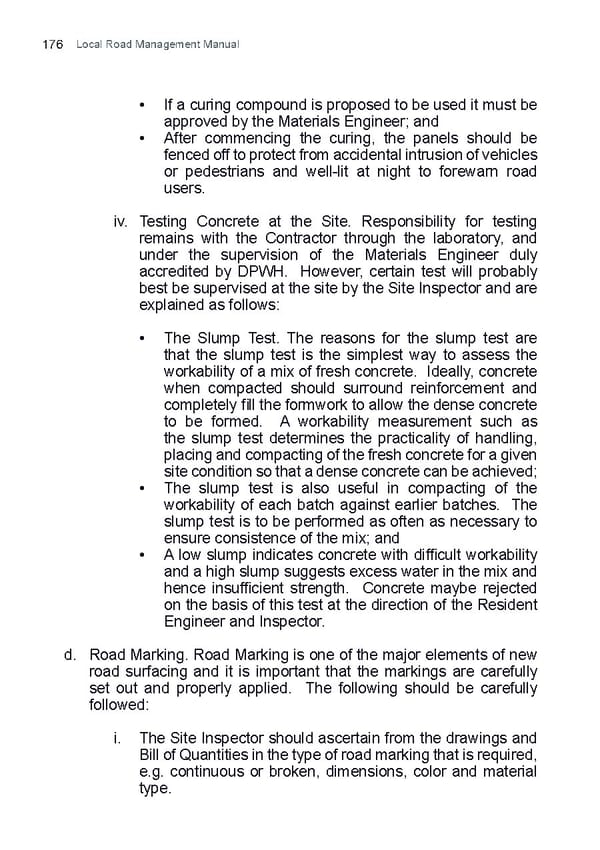Local Road Management Manual 176 • If a curing compound is proposed to be used it must be approved by the Materials Engineer; and • After commencing the curing, the panels should be fenced off to protect from accidental intrusion of vehicles or pedestrians and well-lit at night to forewarn road users. iv. Testing Concrete at the Site. Responsibility for testing remains with the Contractor through the laboratory, and under the supervision of the Materials Engineer duly accredited by DPWH. However, certain test will probably best be supervised at the site by the Site Inspector and are explained as follows: • The Slump Test. The reasons for the slump test are that the slump test is the simplest way to assess the workability of a mix of fresh concrete. Ideally, concrete when compacted should surround reinforcement and completely fill the formwork to allow the dense concrete to be formed. A workability measurement such as the slump test determines the practicality of handling, placing and compacting of the fresh concrete for a given site condition so that a dense concrete can be achieved; • The slump test is also useful in compacting of the workability of each batch against earlier batches. The slump test is to be performed as often as necessary to ensure consistence of the mix; and • A low slump indicates concrete with difficult workability and a high slump suggests excess water in the mix and hence insufficient strength. Concrete maybe rejected on the basis of this test at the direction of the Resident Engineer and Inspector. d. Road Marking. Road Marking is one of the major elements of new road surfacing and it is important that the markings are carefully set out and properly applied. The following should be carefully followed: i. The Site Inspector should ascertain from the drawings and Bill of Quantities in the type of road marking that is required, e.g. continuous or broken, dimensions, color and material type.
 Local Road Management Manual Page 176 Page 178
Local Road Management Manual Page 176 Page 178